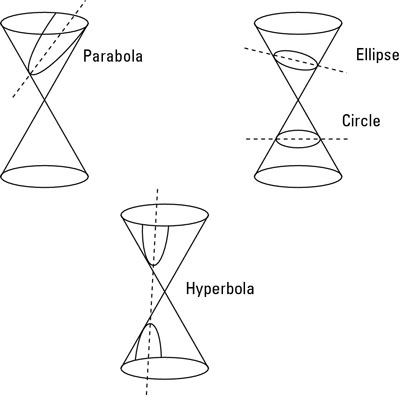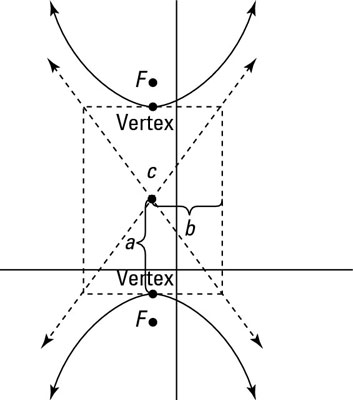

In pre-calculus, you may need to find the equation of asymptotes to help you sketch the curves of a hyperbola. Because hyperbolas are formed by a curve where the difference of the distances between two points is constant, the curves behave differently than other conic sections. This figure compares the different conic sections.


Hyperbolas are the only conic sections with asymptotes. Even though parabolas and hyperbolas look very similar, parabolas are formed by the distance from a point and the distance to a line being the same. Therefore, parabolas don't have asymptotes.
Some pre-calculus problems ask you to find not only the graph of the hyperbola but also the equation of the lines that determine the asymptotes. When asked to find the equation of the asymptotes, your answer depends on whether the hyperbola is horizontal or vertical.
If the hyperbola is horizontal, the asymptotes are given by the line with the equation
If the hyperbola is vertical, the asymptotes have the equation
The fractions b/a and a/b are the slopes of the lines. Now that you know the slope of your line and a point (which is the center of the hyperbola), you can always write the equations without having to memorize the two asymptote formulas.
You can find the slope of the asymptote in this example,
by following these steps:
Mary Jane Sterling aught algebra, business calculus, geometry, and finite mathematics at Bradley University in Peoria, Illinois for more than 30 years. She is the author of several For Dummies books, including Algebra Workbook For Dummies, Algebra II For Dummies, and Algebra II Workbook For Dummies.